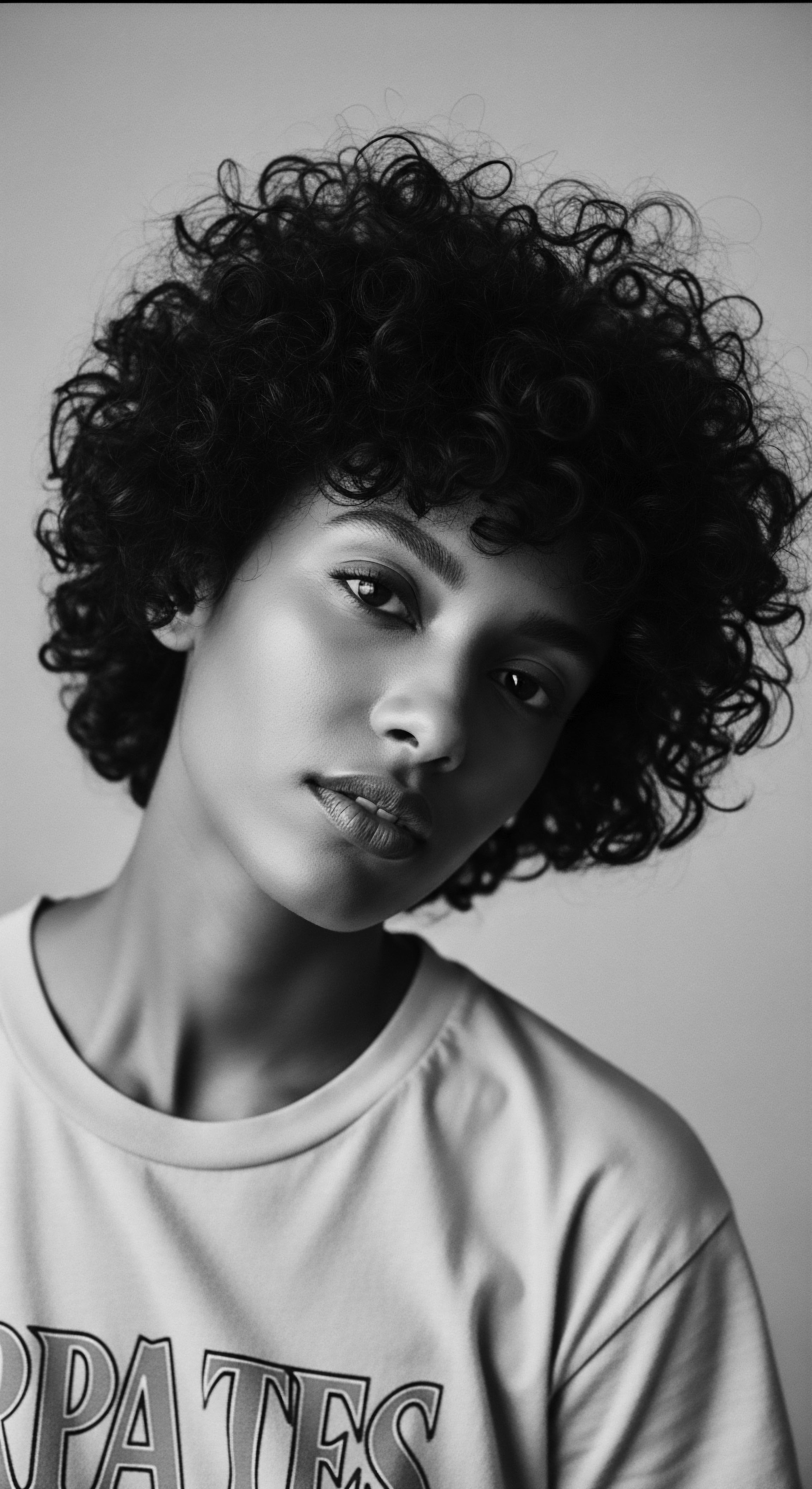
Fundamentals
The concept of a Textured Hair Regimen presents as a deliberate, organized approach to the care of hair possessing natural bends, twists, or coils. This care system acknowledges the unique architectural makeup of textured strands, recognizing their distinct requirements for hydration, strength, and integrity. Understanding this regimen begins with a recognition of hair’s elemental structure and its historical significance. For those with Black and mixed-race hair, this is not a recent invention; it is an enduring thread of ancestral wisdom, weaving through millennia, adapting and persisting through countless generations.
At its core, a regimen for textured hair is a series of consistent practices aimed at maintaining scalp health and promoting growth. It involves specific steps that counteract the inherent fragility and dryness often associated with the helical shape of such strands. The path to flourishing textured hair originates from a deep understanding of its needs, a comprehension rooted in both biological fact and inherited tradition.
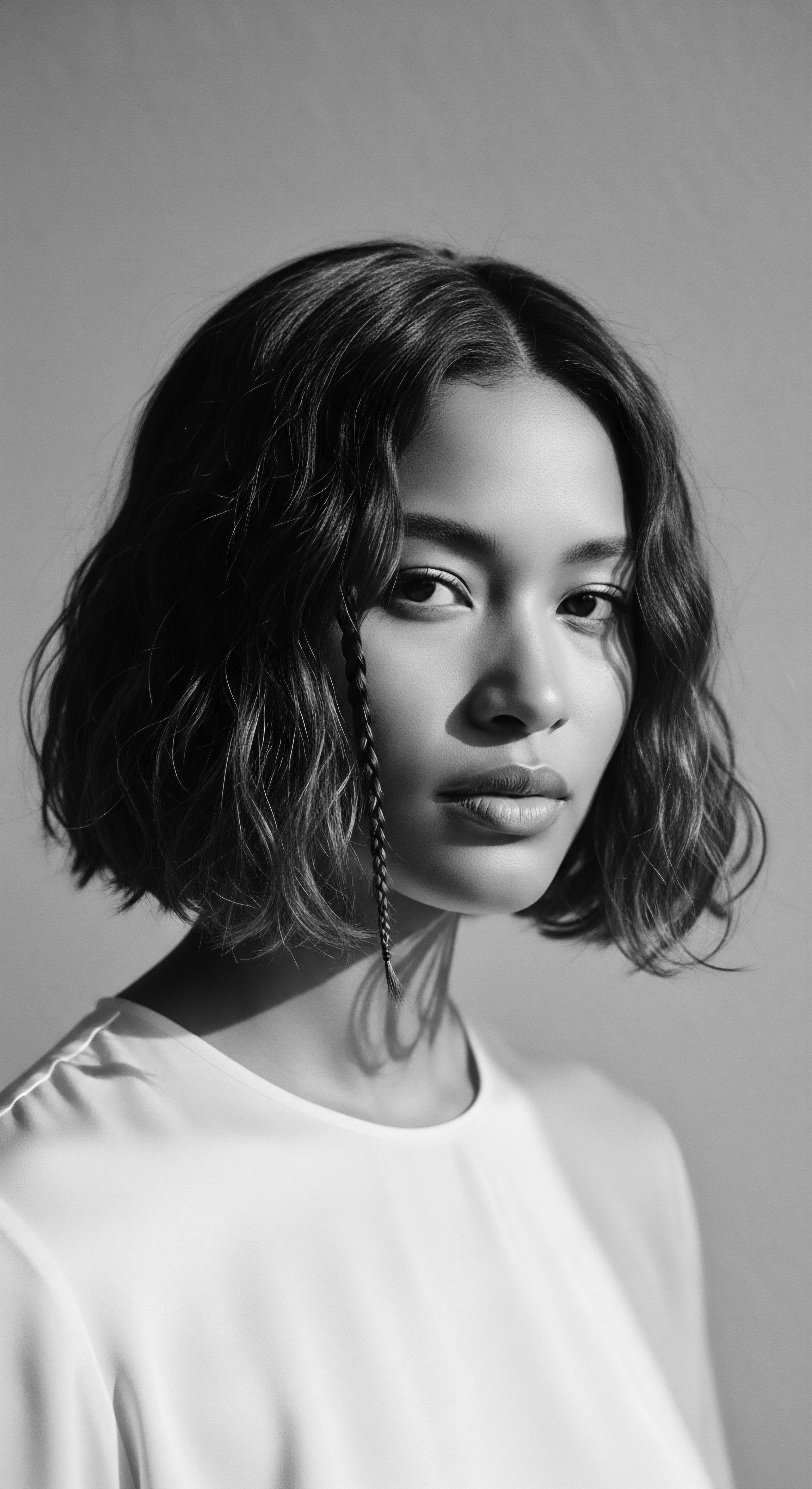
Understanding the Helix
Textured hair, ranging from loose waves to tight coils, typically exhibits an elliptical or flat cross-section, leading to a complex and varied curl pattern. This unique shape impacts how natural oils produced by the scalp travel down the hair shaft, often leaving the ends drier than straighter counterparts. Moreover, the points where the hair bends along its helical path are areas of inherent weakness, susceptible to breakage if not handled with care.
This foundational biological reality informs every aspect of a thoughtful care routine. The very elasticity of a coiled strand allows for its spring and movement, yet also necessitates gentler manipulation.
This is an observation passed down through generations, long before microscopes revealed the cellular intricacies of a single strand. Ancient communities understood that hair with a distinct curl required different handling than hair that hung straight. This practical wisdom formed the earliest, unwritten regimens, guiding hands in gentle washing, protective styling, and the application of natural emollients.
A Textured Hair Regimen is a systematic approach to nurturing hair with inherent bends, twists, or coils, a practice deeply informed by both the hair’s unique biological structure and centuries of ancestral wisdom.

Early Foundations of Care
The earliest forms of a Textured Hair Regimen were not written directives or product labels, but rather embodied practices, passed from elder to youth within communities. These traditional care rituals focused on preservation and enhancement, utilizing what nature offered. For instance, in various African societies, the act of hair grooming was a communal affair, where individuals gathered to braid and style one another’s hair.
This process served not only as a means of maintaining hair health but also as a powerful mechanism for storytelling, knowledge transfer, and strengthening social bonds. Such gatherings might last for hours, offering space for shared histories and wisdom to flow freely, alongside the gentle work of cleansing and adorning.
Ancient Egyptians, for example, used various natural ingredients for hair care, including plant extracts and oils. Queen Tiye, an ancient Egyptian queen, was depicted with an afro hairstyle, symbolizing the importance of natural hair even in antiquity. The practice of oiling, a cornerstone of many modern regimens, finds its echo in these historical uses of plant-based applications. These early methods illustrate a deep respect for hair, understanding it as a vital part of self and community.
Historically, practices within a hair regimen also communicated deeper societal roles. Hair could denote a person’s age, marital status, social standing, or even spiritual beliefs. The patterns created through braiding or coiling were not simply decorative; they conveyed messages, acting as a visual language within communities. This communicative function speaks to the profound meaning attributed to hair beyond mere aesthetics.
This early understanding of hair care laid the groundwork for contemporary practices, demonstrating a continuous lineage of dedication to the unique needs of textured hair. The lessons from these foundational approaches teach us patience, mindfulness, and a deep reverence for what our hair is.

Intermediate
Stepping beyond the fundamentals, an intermediate comprehension of the Textured Hair Regimen delves into the nuanced interplay of scientific principles and cultural continuity. This perspective recognizes that while the basic steps remain constant, their application evolves with a deeper understanding of hair’s microscopic architecture and the rich legacy of care traditions. This involves appreciating the specific attributes of textured hair types and the particular challenges each presents, along with the sophisticated solutions ancestral practices offered.

The Micro-World of a Strand
Hair with texture, from the broader waves to the most compact coils, originates from follicles that are typically oval or flat in cross-section, unlike the round follicles that produce straight hair. This anatomical distinction creates the characteristic bends and twists along the hair shaft. Each bend represents a potential point of fragility where the hair’s outermost layer, the cuticle, can lift, making it more vulnerable to moisture loss and damage. Furthermore, the numerous twists and turns impede the uniform distribution of sebum, the natural oil produced by the scalp, leaving the hair, especially at the ends, prone to dryness.
This microscopic reality underscores the need for specific regimen elements. Adequate moisture becomes a protective shield, while gentle detangling techniques preserve the integrity of the delicate strand. The choices made in product formulation and application reflect this scientific understanding, seeking to hydrate, strengthen, and minimize friction along the complex path of each hair.
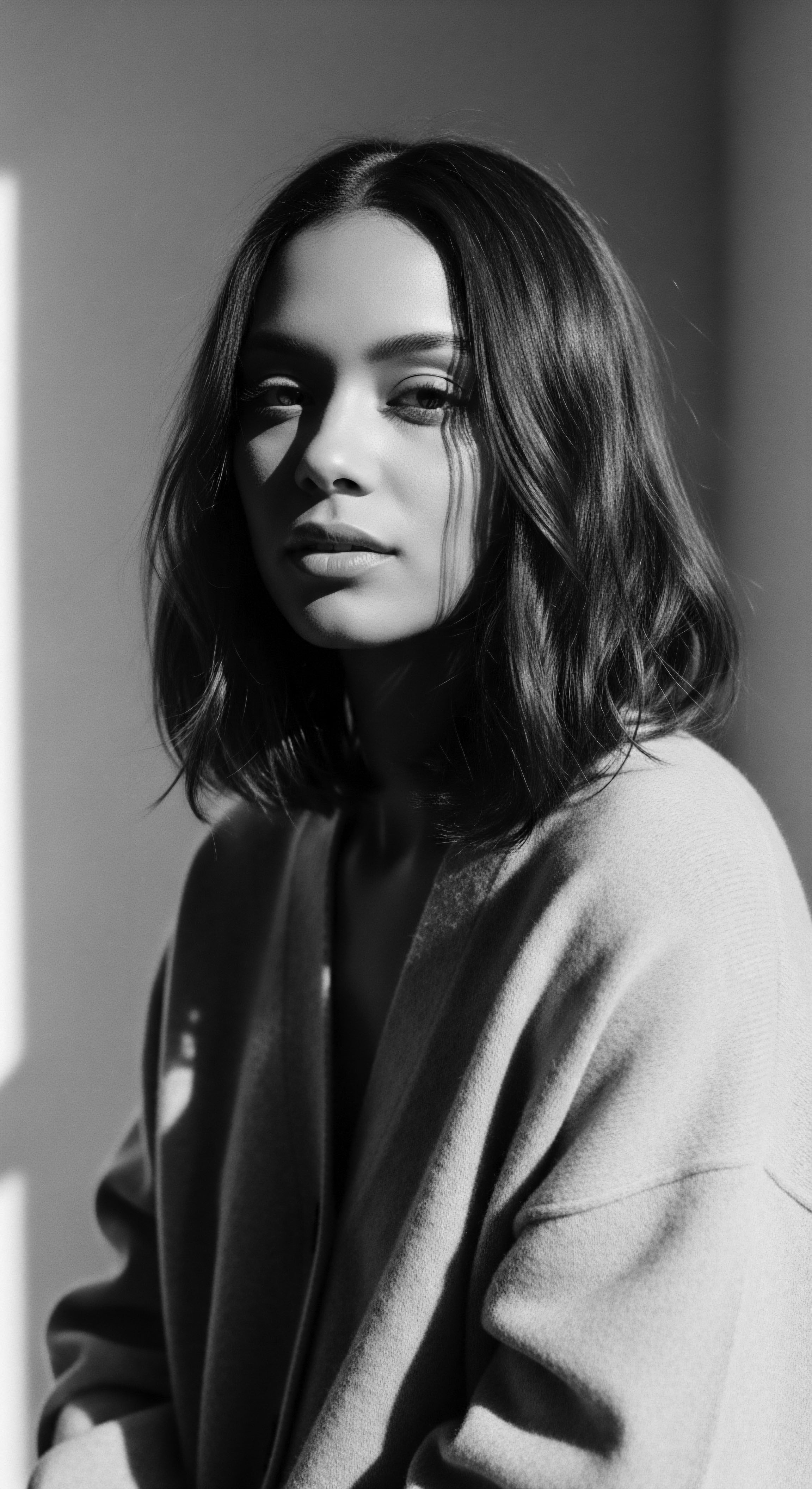
Elements of a Considered Regimen
A thoughtful Textured Hair Regimen extends beyond simple cleansing and conditioning to encompass a holistic cycle of care. This often involves several key components, each serving a distinct purpose in supporting hair health and vitality.
- Cleansing ❉ Selecting a sulfate-free or low-lather cleanser helps to remove product buildup without stripping the hair of its natural moisture, preserving the delicate lipid layer.
- Deep Conditioning ❉ Applying rich, emollient conditioners on a regular basis, often with heat, allows for deeper penetration of moisturizing and strengthening ingredients into the hair shaft, addressing dryness and reinforcing the cuticle.
- Moisturizing and Sealing ❉ The “LOC” or “LCO” method, layering liquid (water or leave-in conditioner), oil, and cream, provides sustained hydration. The liquid introduces moisture, the oil helps to seal it, and the cream offers further conditioning and hold.
- Detangling ❉ Using fingers or a wide-tooth comb on wet or damp hair, often saturated with conditioner, minimizes breakage. This slow, deliberate process honors the hair’s natural state, working with its coils rather than against them.
- Protective Styling ❉ Braids, twists, buns, and updos reduce manipulation and exposure to environmental stressors, safeguarding the hair’s delicate structure and preserving moisture. These styles are direct descendants of ancient practices aimed at protection and preservation.

Rituals of Adornment and Purpose
The application of these regimen steps is not merely a practical endeavor; it is a ritual steeped in historical significance. Throughout African cultures, hair was a canvas for conveying identity, status, and community affiliation. The styling process itself was often communal, fostering intergenerational connection and the transmission of knowledge. The time spent in these sessions allowed for shared stories, songs, and lessons, creating a living archive of heritage.
Consider the Zulu Women of Southern Africa, whose hair practices were integral to their social markers. For instance, once engaged, a Zulu woman traditionally grew her hair long as a sign of respect for her future in-laws, signifying her new status. Married women wore distinctive hats or sculpted their hair into elaborate forms, such as the Isicholo, which publicly announced their marital standing.
These practices underscore that hair care was never a solitary, superficial act. It was a deeply meaningful engagement with self and community, a public declaration of one’s place within the societal fabric.
The systematic care within a Textured Hair Regimen extends beyond physical maintenance, serving as a continuity of ancestral traditions that weave identity, community, and purpose into each strand.
The ingredients used in historical hair care also speak to a rich ethnobotanical wisdom. Natural oils like shea butter, coconut oil, and aloe vera, commonly utilized today, have been staples in African hair care for centuries, valued for their moisturizing and protective qualities. This demonstrates a timeless understanding of natural resources and their beneficial properties for hair health. The careful selection of these gifts from the earth forms a direct lineage from ancient practice to modern regimen, affirming the enduring power of natural elements.
| Aspect of Care Moisturizing Agents |
| Ancestral Practice (Historical Context) Used shea butter, animal fats, and plant oils (e.g. Marula oil, Rooibos tea extracts in South Africa). |
| Contemporary Regimen (Modern Interpretation) Application of leave-in conditioners, natural oils (coconut, jojoba, argan), and moisturizing creams. |
| Aspect of Care Hair Manipulation |
| Ancestral Practice (Historical Context) Communal braiding, twisting, and coiling; gentle detangling with fingers or wide-tooth tools. |
| Contemporary Regimen (Modern Interpretation) Finger detangling, use of wide-tooth combs, systematic sectioning for styling. |
| Aspect of Care Protective Styles |
| Ancestral Practice (Historical Context) Cornrows, Bantu knots, elaborate sculpted styles for protection and communication. |
| Contemporary Regimen (Modern Interpretation) Braids, twists, locs, buns, updos to minimize breakage and environmental exposure. |
| Aspect of Care Social/Cultural Role |
| Ancestral Practice (Historical Context) Signified age, marital status, tribal affiliation, wealth, and spiritual beliefs; fostered community bonding. |
| Contemporary Regimen (Modern Interpretation) Expression of personal identity, cultural pride, and connection to heritage; shared knowledge in online communities. |
| Aspect of Care The echoes of ancient hair care practices continue to shape the contemporary Textured Hair Regimen, underscoring a consistent dedication to the health and identity of textured hair across generations. |
The intermediate journey into the Textured Hair Regimen reveals a layered understanding ❉ the scientific realities of hair texture necessitating specific care, and the historical tapestry of cultural practices providing a profound framework for that care. This knowledge empowers individuals to approach their hair not as a challenge, but as a living legacy, capable of thriving when given the appropriate attention and reverence.

Academic
An academic delineation of the Textured Hair Regimen transcends mere practical steps, positioning it as a complex sociocultural construct deeply woven into the experiences of individuals with Black and mixed-race hair. This perspective integrates biological realities with historical context, sociological dynamics, and psychological resonance, presenting a comprehensive interpretation of its meaning and significance. It is a systematic mode of care, yes, but also a profound act of self-definition, cultural preservation, and, at times, quiet resistance.

Ontology of the Textured Strand
The inherent characteristics of textured hair – its helical structure, varying porosity, and distinct protein distribution – demand a tailored approach to care. Unlike straight hair, which allows sebum to travel down the shaft with ease, the numerous bends in coiled and kinky textures impede this natural lubrication, rendering them inherently prone to dryness. These structural curvatures also create points of mechanical fragility, increasing susceptibility to breakage from routine manipulation.
Understanding this biological predisposition is foundational; it compels a regimen focused on moisture retention, gentle handling, and minimizing friction. The science confirms the wisdom of ancestral practices that prioritized nourishing emollients and protective styling, practices born of observation and adaptation over centuries.
This biological specificity means that a successful Textured Hair Regimen is not a universal application but a highly personalized one, reflecting the unique variations within the broad spectrum of textured hair. The precise shape of the follicle, the density of disulfide bonds, and the distribution of cuticular scales all influence how a strand responds to various inputs, from water to oils to mechanical stress. Recognition of these subtle differences guides informed product selection and technique, fostering an environment where hair can flourish in its innate pattern.

Ancestral Echoes in Modern Practice
The contemporary Textured Hair Regimen finds deep roots in ancestral practices, a continuity that speaks to enduring knowledge systems. Historically, hair care in African societies was far from a solitary, utilitarian task. It was often a communal ceremony, a time for the exchange of stories, wisdom, and familial bonds. These sessions served as informal academies where intricate braiding patterns and care techniques were passed across generations.
The very act of styling could signify a person’s life stage, social status, or even their tribal affiliation. The significance of hair extended to spiritual beliefs, with many cultures considering the head as a point of entry for spiritual energy.
One particularly poignant example of this historical continuity, often overlooked in mainstream discussions, is the tradition among Enslaved West African Women during the transatlantic slave trade. Faced with brutal conditions, forced assimilation, and the deliberate shaving of their heads as a means of dehumanization, these women ingeniously transformed their hair into a silent form of communication and survival. Certain communities, particularly rice farmers from West Africa, braided rice seeds into their cornrows before the perilous Middle Passage. This act, documented in historical accounts, allowed them to carry a vital food source and a symbolic piece of their homeland to the Americas, becoming a literal and figurative seed of survival.
Furthermore, cornrows were sometimes used as concealed maps, their intricate patterns encoding escape routes from plantations, a clandestine language of freedom woven into the very strands of their hair. This deep historical example highlights the regimen’s connection to physical survival and spiritual resistance, underscoring hair as a powerful tool for maintaining cultural identity and agency under duress. This narrative of hair as a vessel for covert communication illustrates the profound, existential meaning attributed to hair care, far beyond mere aesthetics.
The Textured Hair Regimen is not simply a beauty routine; it is a living repository of resilience, ancestral knowledge, and profound cultural memory.
The persistent use of natural ingredients like shea butter, various plant oils, and indigenous herbs within contemporary regimens echoes the ethnobotanical wisdom of ancient African communities. A review by A. A. Adebayo and co-authors in 2024, focusing on cosmetopoeia of African plants for hair treatment, compiled 68 plant species traditionally used across Africa for hair and scalp care, ranging from addressing alopecia and dandruff to promoting overall hair health.
This research validates the long-standing efficacy of natural remedies and highlights the continuous integration of such resources into hair care practices. The very act of returning to these natural elements, often passed down orally, reinforces a powerful connection to a lineage of embodied knowledge.
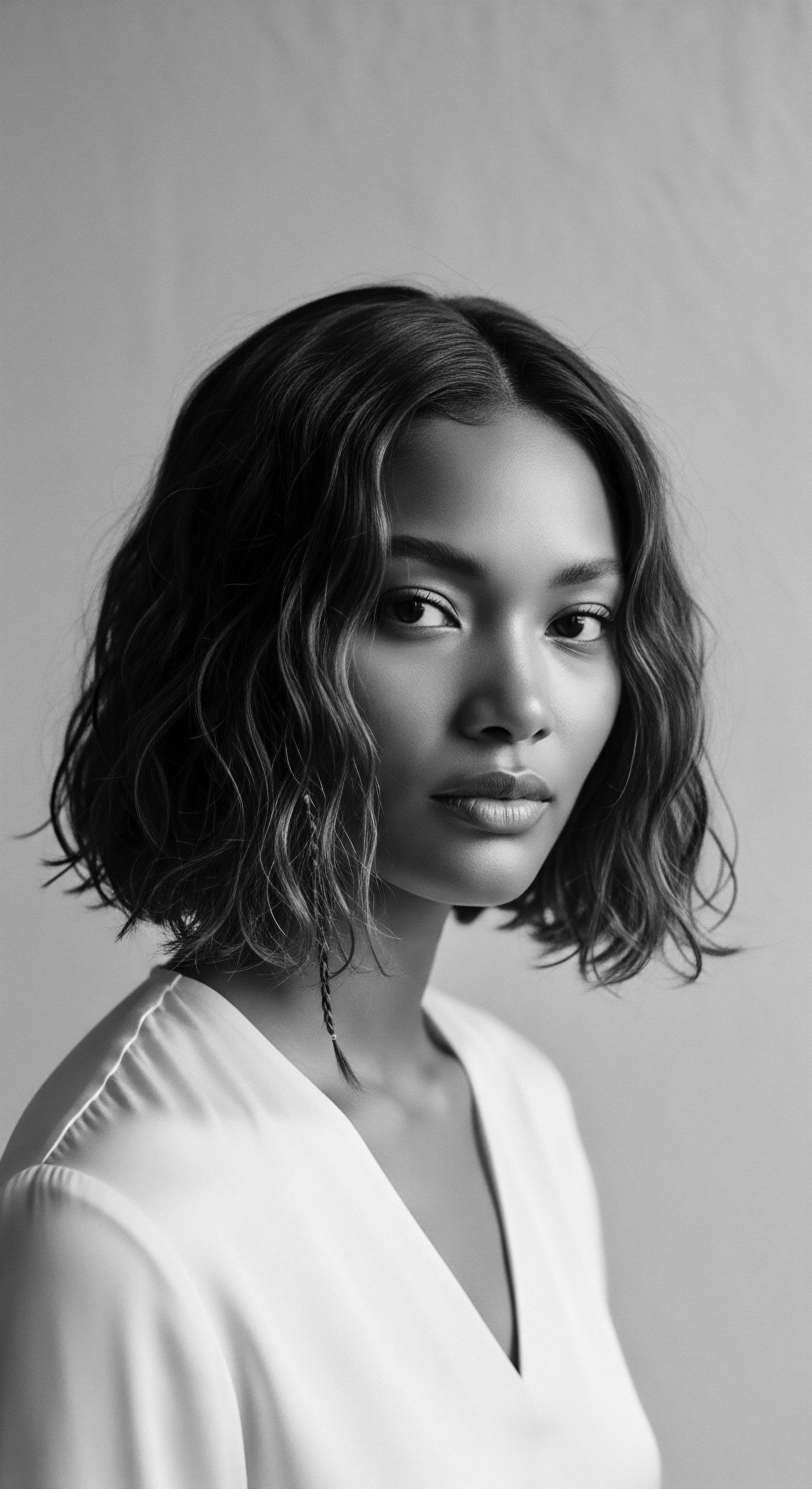
The Regimen as Cultural Praxis
The Textured Hair Regimen, viewed through an academic lens, functions as a form of cultural praxis. It is a set of actions that both reflect and shape cultural values, a dynamic process of maintaining heritage in a world that has historically devalued textured hair. The collective shift towards embracing natural hair, often facilitated by shared knowledge within communities and online platforms, represents a reclaiming of identity that counters Eurocentric beauty standards. This movement is not just about hair; it is about self-acceptance, racial pride, and the affirmation of Black and mixed-race aesthetic traditions.
The challenges faced by individuals with textured hair—including discrimination in academic and professional settings—underscore the regimen’s sociopolitical dimension. Studies reveal that Black women’s hair is significantly more likely to be perceived as unprofessional, with a substantial percentage altering their natural hair for job interviews. The very existence of legislation like the CROWN Act, designed to prohibit hair discrimination, speaks to the ongoing struggle for the right to wear natural hair without prejudice.
In this context, maintaining a Textured Hair Regimen becomes an act of defiance, a quiet assertion of cultural autonomy and personal integrity. The regimen thus serves as a visible marker of identity, a statement that rejects imposed norms and celebrates an ancestral inheritance.
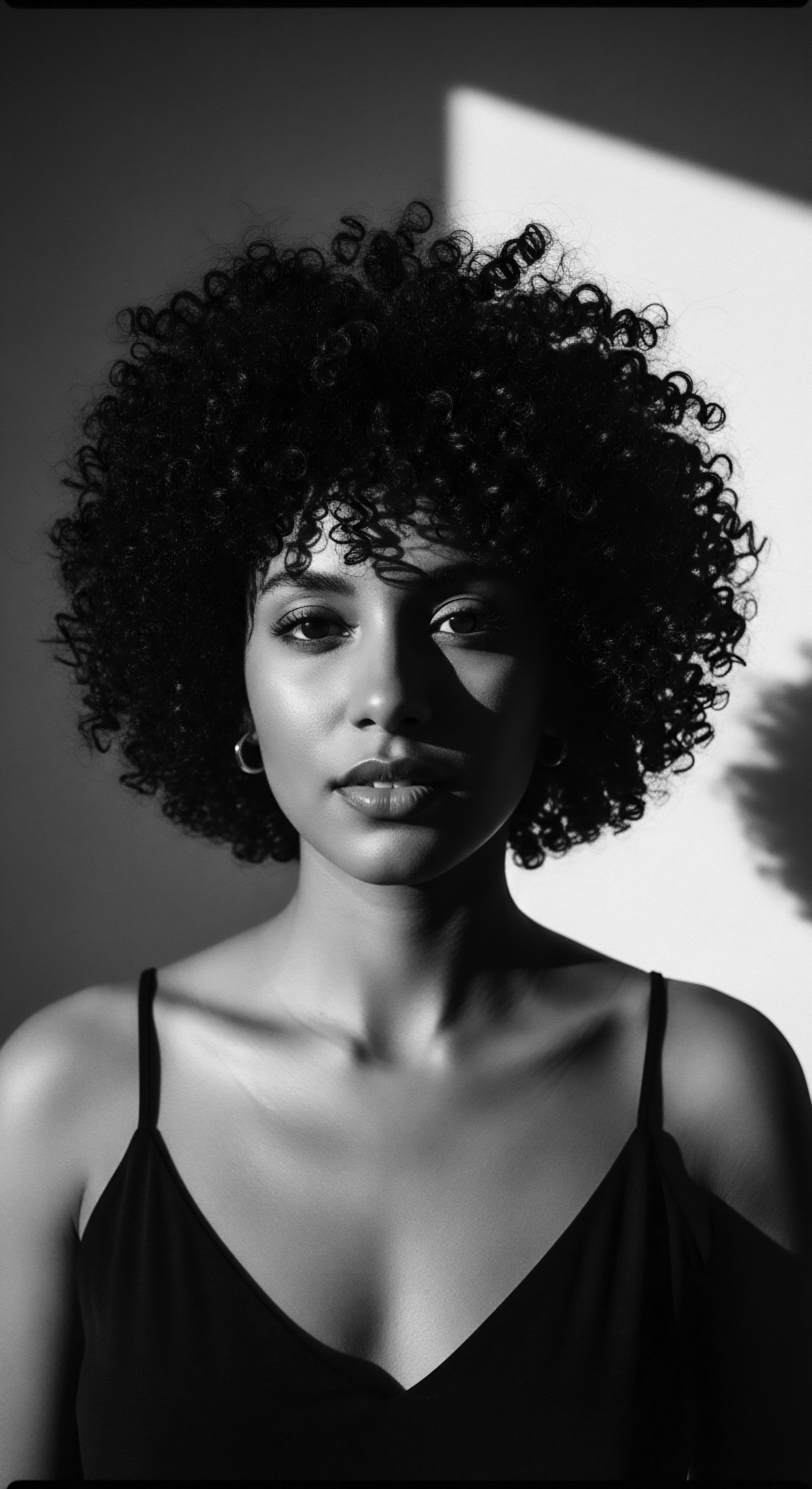
Sociocultural Resonance of Textured Hair Care
The long-term impact of a holistic Textured Hair Regimen transcends individual hair health, extending into profound sociocultural and psychological dimensions. It fosters a sense of collective memory and intergenerational bonding. The shared rituals of hair care, whether in family settings or community salons, serve as spaces for transmitting cultural narratives, historical experiences, and practical skills.
This continuity reinforces communal ties and strengthens a sense of belonging. The visible affirmation of natural hair textures also plays a significant role in positive identity formation, contributing to self-esteem and resilience in the face of societal biases.
| Cultural Context West Africa (e.g. Yoruba, Fulani) |
| Historical Significance of Hair/Regimen Hair as a complex language system, signifying age, marital status, wealth, and community roles. Braiding as a social activity passing down knowledge. |
| Modern Regimen Linkage Emphasis on protective styling (braids, twists), communal knowledge sharing via social media, and culturally resonant product choices. |
| Cultural Context Southern Africa (e.g. Zulu, Himba) |
| Historical Significance of Hair/Regimen Hair styles and adornments indicating specific life stages, marital status, or spiritual connection. Use of natural ochre and butter for hair protection. |
| Modern Regimen Linkage Incorporation of natural butters and oils, long-term protective styles for hair health and preservation. |
| Cultural Context African Diaspora (during slavery) |
| Historical Significance of Hair/Regimen Hair as a tool for resistance; cornrows used to hide seeds for survival or encode escape routes. Forced shaving as dehumanization. |
| Modern Regimen Linkage The regimen as an act of self-care, cultural pride, and resistance against dominant beauty standards; celebrating natural texture. |
| Cultural Context The enduring cultural significance of textured hair shapes its regimen, transforming routine care into a powerful assertion of identity and a continuation of ancestral wisdom. |
Moreover, a well-executed regimen rooted in ancestral practices can lead to deeper physical well-being. By prioritizing natural ingredients, minimizing harsh chemicals, and focusing on gentle handling, individuals experience not only healthier hair but also a greater sense of bodily integrity. This physical affirmation reinforces psychological well-being, fostering a profound connection between personal care and a rich heritage. The ongoing discourse around textured hair, its styling, and its acceptance demonstrates that the Textured Hair Regimen is a dynamic, living entity, continually evolving while steadfastly anchored in the deep past of its communities.
The definition of the Textured Hair Regimen at this academic plateau is therefore multidimensional ❉ it is a biological necessity given the unique architecture of textured strands; it is a historical legacy of sophisticated care practices; it is a cultural statement, embodying resistance and identity; and it is a psychological anchor, fostering self-worth and community connection. This profound understanding compels a reverence for every coil and kink, recognizing in each strand a testament to endurance, beauty, and inherited wisdom.
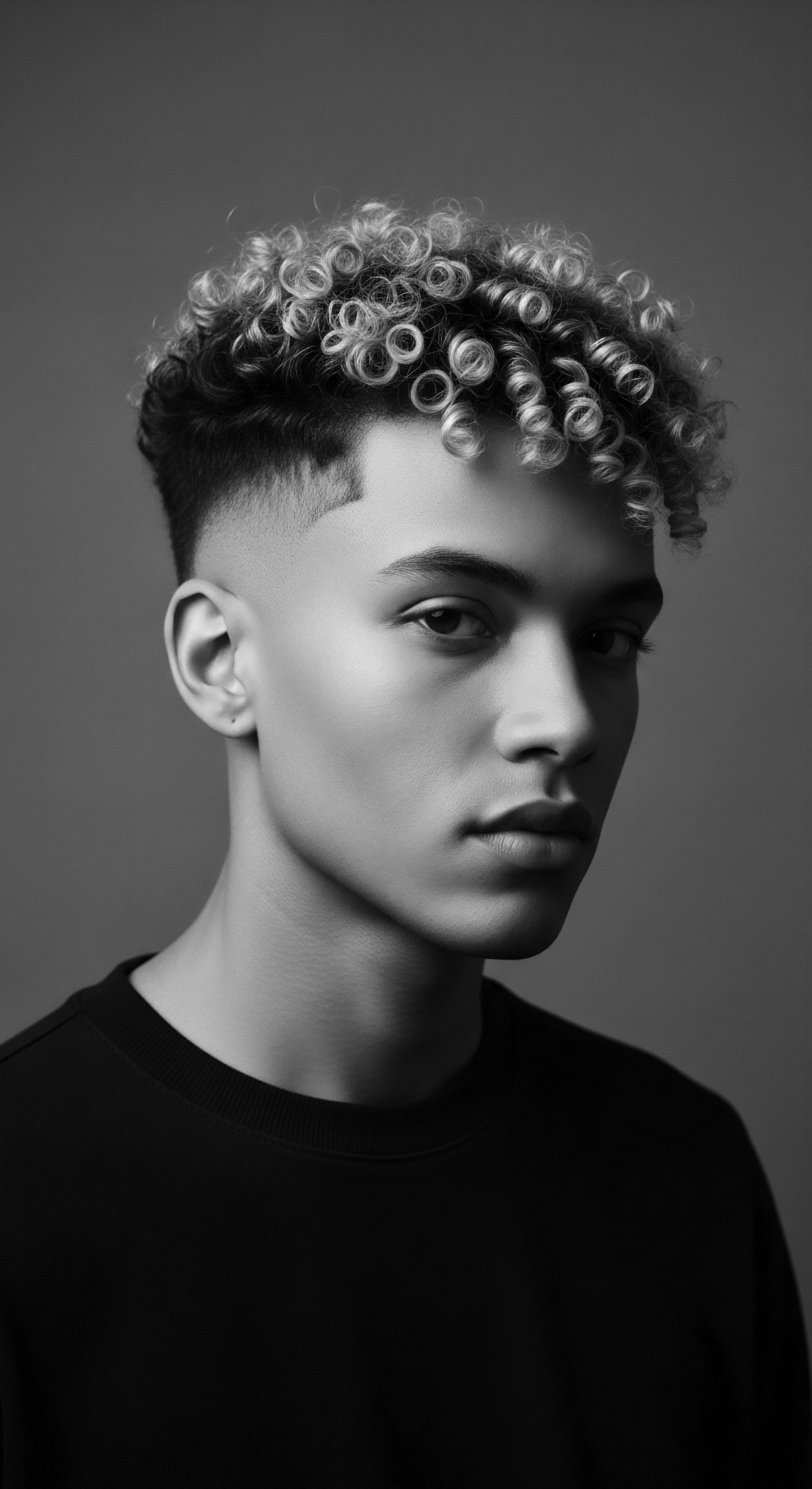
Reflection on the Heritage of Textured Hair Regimen
The journey through the intricate world of the Textured Hair Regimen brings us to a compelling realization ❉ this is more than a mere sequence of steps to maintain hair. It is a living, breathing archive, a testament to the enduring spirit of individuals with textured hair, particularly those from Black and mixed-race lineages. From the initial whispers of elemental biology, echoing the very source of our strands, to the tender threads of living traditions, and finally, to the unbound helix of identity shaping futures, the regimen stands as a profound connection to ancestral wisdom.
Each decision within this regimen – from the choice of a nourishing oil to the embrace of a protective style – resonates with echoes of those who came before us. It is a quiet dialogue with matriarchs who understood the deep language of hair, their hands shaping not only strands but also cultural narratives. The act of nurturing textured hair becomes a continuation of resilience, a defiance against historical attempts to erase or devalue this unique aspect of self.
We honor not just the physical hair, but the collective memory, the artistry, and the profound strength that has flowed through generations, carried in every curl and coil. This heritage is our crown, worn with purpose and profound respect.
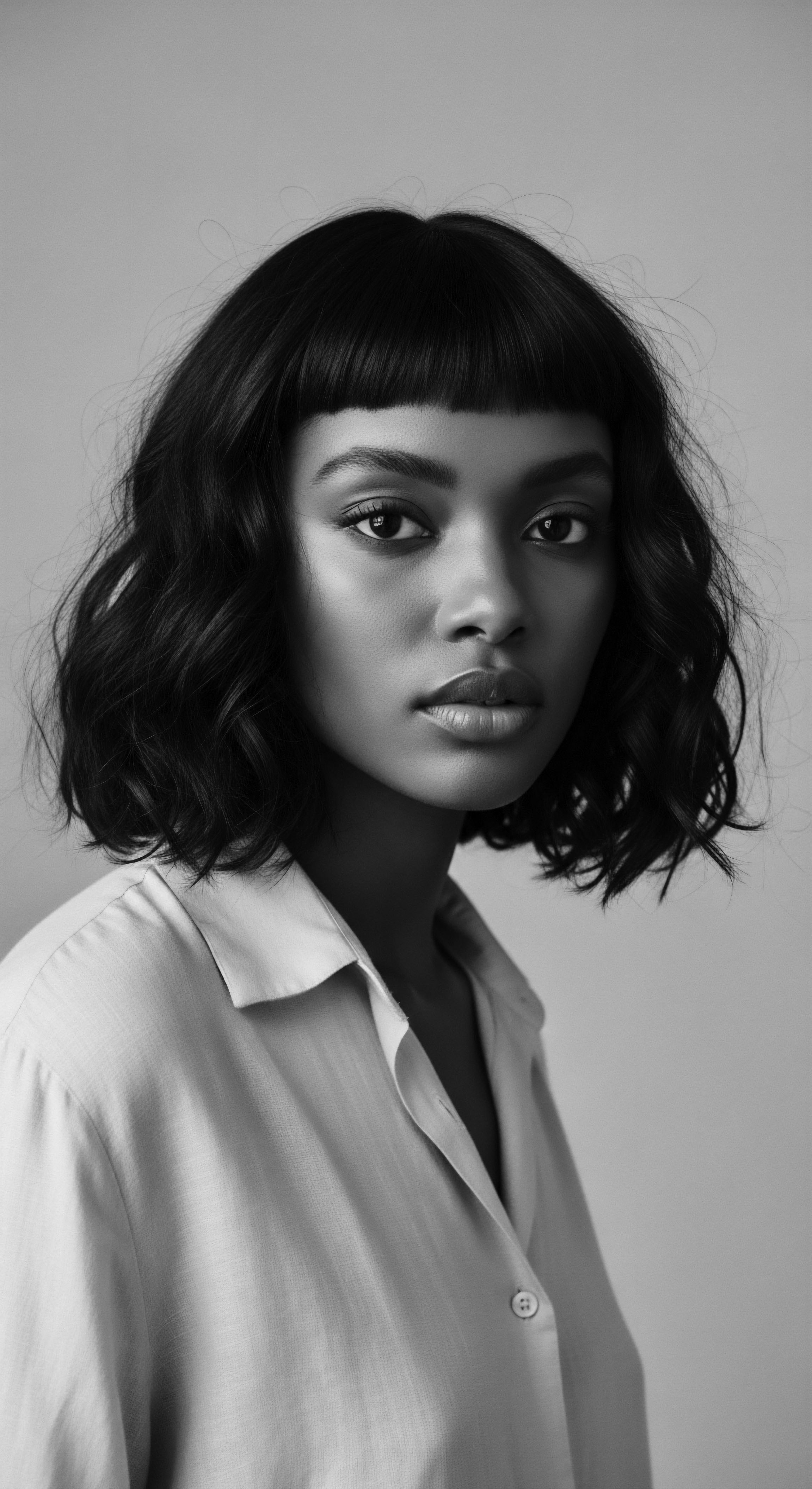
References
- Adebayo, A. A. et al. (2024). Cosmetopoeia of African Plants in Hair Treatment and Care ❉ Topical Nutrition and the Antidiabetic Connection? Diversity, 16(2), 96.
- Byrd, A. & Tharps, L. L. (2014). Hair Story ❉ Untangling the Roots of Black Hair in America. St. Martin’s Press.
- Essel, O. Q. (2023). Decolonizing African Hair Discourse. Afrocentric Hairstyles in Ghana.
- Gordon, M. (2018). Cited in Omotos, A. (2018). Examining the history and value of African hair. Journal of Pan African Studies, 11(7), 87-101.
- Greene, A. (2012). Good Hair ❉ The Cultural Politics of Hair and Beauty in African American Women’s Lives. Rutgers University Press.
- Mbilishaka, A. (2020). Cited in White-Jolivette, T. (2025). African American Women’s Experience of Wearing Natural Textured Hair. Walden University.
- Rooks, N. M. (1996). Hair Raising ❉ Beauty, Culture, and African American Women. Rutgers University Press.
- Sieber, R. & Herreman, F. (2000). Hair in African Art and Culture. Prestel.
